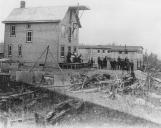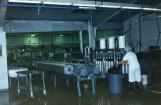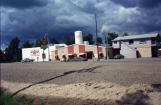113
Perrin Shocker Plant1900
May Street, New Liskeard, Ontario, Canada
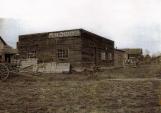 Credits:
Credits:Harold and Elizabeth Hie
115
There is perhaps no worse disaster that could befall a settler than a fire and farmers in Temiskaming saw their share of them. In 1916, fire swept through Hudson and Casey Townships destroying everything in its path. A change in wind direction prevented the town of New Liskeard from suffering a similar fate.117
Again in 1922, on October 4th, a brush fire devastated the towns of Haileybury and North Cobalt while once again, New Liskeard suffered little damage comparatively because of a change in wind direction. Except for Earlton, all the small villages between New Liskeard and Englehart were wiped out by that fire.118
Agricultural- based industries operating in the Little Clay Belt today2003
North Eastern Ontario
 Credits:
Credits:Tri-Town & District Chamber of Commerce
119
The early pioneers were nothing if not resilient. While they endured hardships, they also had successes. The farmers of today's Little Clay Belt are among the most technically-advanced and forward- thinking farmers in Ontario.According to a recent newspaper editorial, (Temiskaming Speaker, Friday, March 31, 2006) " The Temiskaming Federation of Agriculture commissioned a study on the economic impact of the district agricultural sector on the local economy and found that farming is a 145 million-dollar business that directly and indirectly supports 2,160 jobs in the district."
Many local and area businesses have developed as a result of agriculture in the Little Clay Belt.
120
Belle Vallée Wools at the Wight Sheep Farm2000
Brethour Township, Ontario, Canada
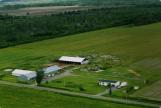 Credits:
Credits:Belle Vallée Wools
121
Just a couple of local success stories include Belle Vallee Wools and the Thornloe Cheese Factory.Belle Vallee Wools is owned and operated by the Wight Family. Their mill has been in operation since 1989 and is a replica of a turn-of-the -century woollen mill. Presently, they are the only complete farm-based woollen mill in Eastern Canada.
To preserve the soft, warm, durability of the Canadian wool, no additives are used in the wool processing. Total in-mill processing enables them to produce yarns in their own colour combinations of heathers and plys.
The woollen mill operates Monday to Friday and invites visitors.
123
Thornloe Cheese Factory claims to have the "best cheese in every whey"!In operation since 1940, the factory employs fourteen full time employees and eight part time workers.
Annually, the plant consumes between five to six million litres of locally-produced milk. From this, the plant produces one million pounds of cheese which is then sold in a regional market from Sudbury, Ontario up through Hearst, Ontario.
125
Director of Operations, Fred Laffin, attributes their success to "being part of a larger corporation (Parmalat) which has probably helped Thornloe Cheese maintain its shelf space in the cut-throat grocery wars that has shut out many other northern dairy producers."Mr. Laffin points out that their biggest selling point is that "we can deliver fresh cheese and curds everyday. Our competitors just can't do that so we've been able to hold our own against competition."
